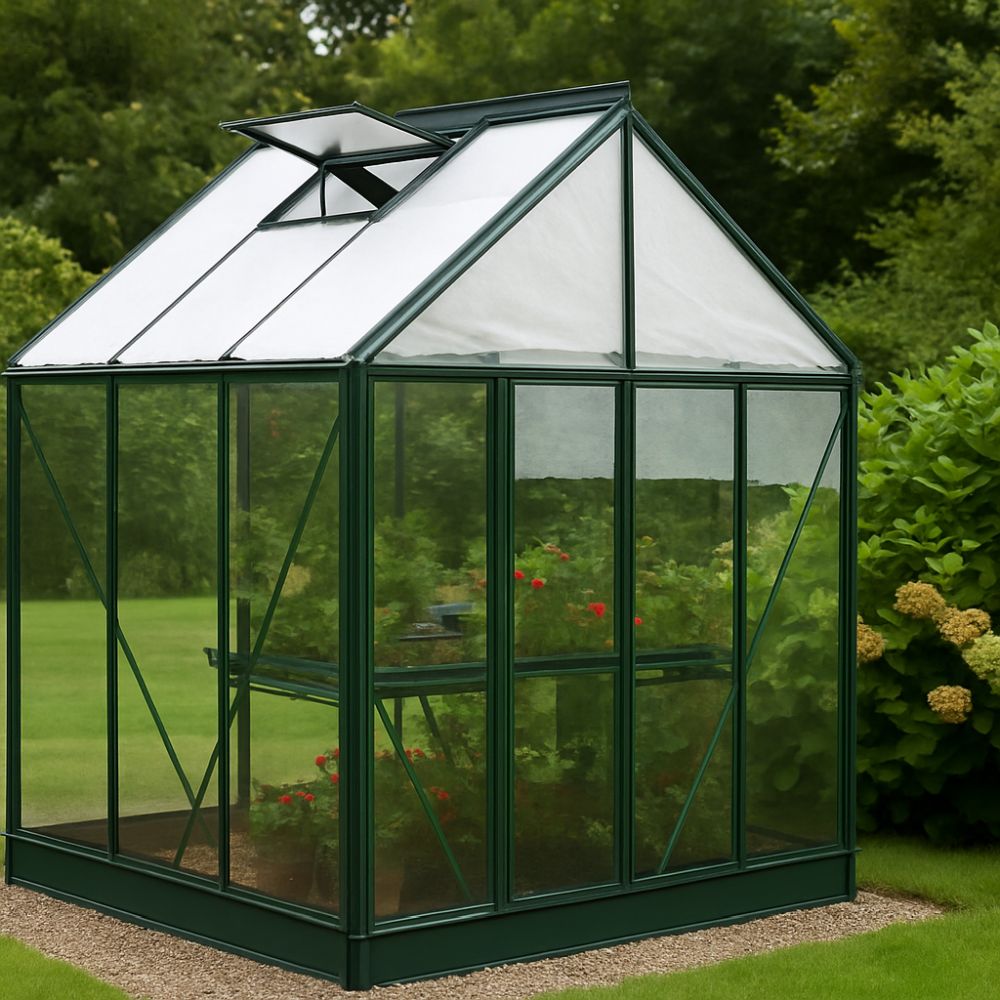When summer arrives, greenhouse temperatures can rise quickly, creating stressful conditions for plants. Too much direct sunlight leads to overheating, wilting and dry soil, reducing growth and damaging delicate crops.
Shading a greenhouse is one of the best ways to keep plants healthy by lowering heat levels and filtering strong sunlight. In this guide, we’ll look at the two most popular methods: greenhouse shading paint and green garden shade netting.
Why Shading A Greenhouse Is Important For Plant Growth
Greenhouses are designed to trap heat and light, but during the warmer months this can become excessive. Without shading, temperatures can climb well above 30 degrees celsius, leaving plants at risk of damage.
By adding greenhouse shading paint or greenhouse shading netting, you can reduce heat build-up, control light exposure and protect plants from harmful UV rays. This helps create a stable growing environment and supports healthy development throughout the season.
Using Greenhouse Shading Paint To Reduce Sunlight
Greenhouse shading paint is a liquid formula that can be applied directly to glass surfaces. Once dry, it forms a white reflective coating that reduces the amount of direct sunlight entering the greenhouse. This helps regulate temperature, lowers glare and prevents plants from overheating.
Shading paint is easy to apply with a brush or sprayer, and just as easy to remove at the end of the season by washing it off with water.
One 500ml container dilutes to 5 litres, which is enough to cover an 8 x 12ft greenhouse. This makes greenhouse paint a cost saving option for gardeners who want a simple, temporary way to shade their glasshouse without installing extra fittings.
Benefits Of Greenhouse Shade Paint For Plants
Applying greenhouse shade paint provides several advantages beyond cooling. It reduces harmful UV rays that can scorch leaves, while still allowing enough light for photosynthesis. This creates a balanced environment where seedlings and mature plants can thrive.
Because it is seasonal, you can use shading paint in the summer months and remove it once cooler weather returns, giving you flexibility throughout the year.
Using Green Garden Shade Netting For Greenhouses
Green garden shade netting is another popular way to protect plants from sun and wind. This breathable mesh provides 40% shading, reducing light intensity while allowing air to circulate.
It can be used over the roof of a greenhouse, inside as an internal curtain, or around outdoor beds to protect plants from wind and sun damage. The netting includes eyelets, making it simple to clip into place, or it can be attached to posts with nails or staples when used as a fence or barrier.
Adding A Greenhouse Autovent For Extra Cooling
Alongside shading, fitting a greenhouse autovent is an excellent way to control temperature automatically. An autovent opens and closes greenhouse windows without electricity, using a heat-sensitive mechanism.
As the temperature rises, the vent opens to release hot air, and closes again as it cools down. When combined with greenhouse shading paint or shade netting, an autovent provides balanced air circulation and temperature control with no need for daily adjustments.
Choosing Between Greenhouse Paint And Shade Netting
Both greenhouse shading paint and greenhouse shade netting offer excellent ways to reduce heat and sunlight in a greenhouse. Paint is a cost effective choice for glasshouses where a temporary reflective coating is required.
Shade netting is more versatile and can be used both on greenhouses and in open gardens for wider protection. Many gardeners use a combination of both, applying shading paint to the roof and adding netting to the sides for complete coverage.
Final Tips For Shading A Greenhouse In Summer
- Apply greenhouse shading paint in late spring to prepare for hot summer days
- Use green garden shade netting
- for both wind protection and shading
- Ensure good airflow by leaving vents open alongside shading methods
- Combine paint and netting for maximum control in very sunny positions
- Fit a greenhouse autovent to automatically manage temperature changes
- Remove shading in autumn to allow maximum light during colder months
